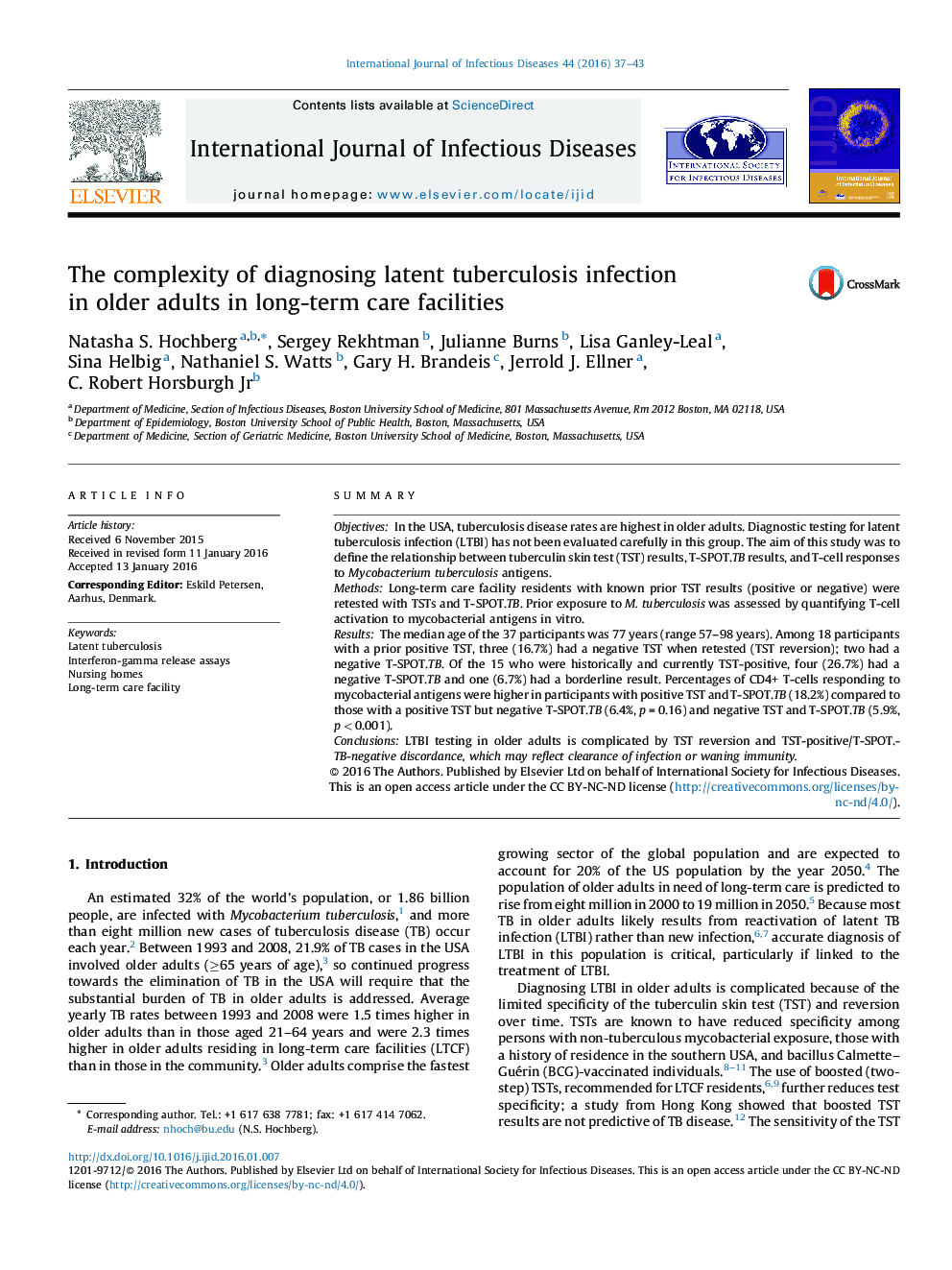| Article ID | Journal | Published Year | Pages | File Type |
|---|---|---|---|---|
| 3361675 | International Journal of Infectious Diseases | 2016 | 7 Pages |
•Reversion of tuberculin skin tests (TSTs) over time was assessed in long-term care facility residents.•One in five subjects with a prior positive TST reverted to a negative test.•TST/interferon-gamma release assay discordance was common.•Reversion of TSTs and discordance may indicate cleared infection.
SummaryObjectivesIn the USA, tuberculosis disease rates are highest in older adults. Diagnostic testing for latent tuberculosis infection (LTBI) has not been evaluated carefully in this group. The aim of this study was to define the relationship between tuberculin skin test (TST) results, T-SPOT.TB results, and T-cell responses to Mycobacterium tuberculosis antigens.MethodsLong-term care facility residents with known prior TST results (positive or negative) were retested with TSTs and T-SPOT.TB. Prior exposure to M. tuberculosis was assessed by quantifying T-cell activation to mycobacterial antigens in vitro.ResultsThe median age of the 37 participants was 77 years (range 57–98 years). Among 18 participants with a prior positive TST, three (16.7%) had a negative TST when retested (TST reversion); two had a negative T-SPOT.TB. Of the 15 who were historically and currently TST-positive, four (26.7%) had a negative T-SPOT.TB and one (6.7%) had a borderline result. Percentages of CD4+ T-cells responding to mycobacterial antigens were higher in participants with positive TST and T-SPOT.TB (18.2%) compared to those with a positive TST but negative T-SPOT.TB (6.4%, p = 0.16) and negative TST and T-SPOT.TB (5.9%, p < 0.001).ConclusionsLTBI testing in older adults is complicated by TST reversion and TST-positive/T-SPOT.TB-negative discordance, which may reflect clearance of infection or waning immunity.
